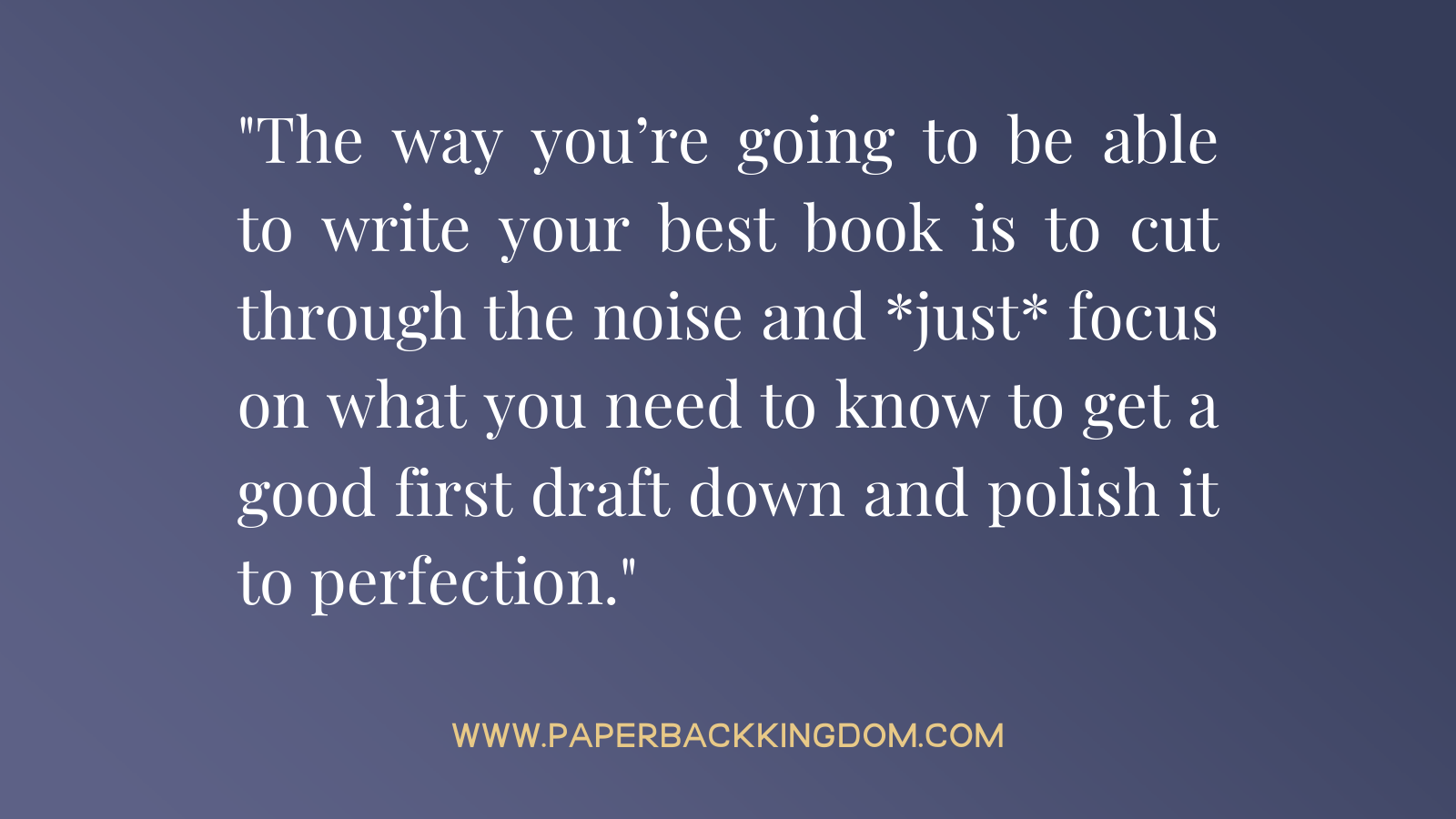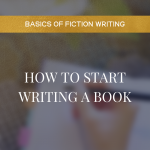
What Should Your Next Step In Authorship Be?
Take the quiz to discover which stage of authorship you’re currently at and a *complete* list of action steps to focus on that will move you to where you want to go.
In my line of work, I do a lot of writing coaching with newer authors because it’s of high integrity to me that authors are putting out their best work. If your book isn’t ready for market, it’s going to flop quickly (and devastatingly), which is not what you want (and especially after pouring so much time, energy and money into it.)
That’s why I’ve created this blog series: The Basics of Fiction Writing.
There’s a lot of writing advice out there, but the way you’re going to be able to write your best book is to cut through the noise and *just* focus on what you need to know to get a good first draft down and polish it to perfection.
My goal with this series is that you’ll walk away with an understanding of the most common mistakes new authors are making, and how to avoid them—and this is based on things I’ve seen time and time again after coaching authors and teaching state-wide workshops in schools for the past five years.
So today, we’re going to go over three common mistakes I see being made with plot, and how you can navigate these challenges:
Mistake #1: Plot Holes and Inconsistencies
These are things in your manuscript that don’t have consistency and congruence throughout the entire story, for example:
- Characters switching eye colors or hair colors (which I often see when writer’s are trying to be overly descriptive and avoid repetition.)
- Characters who suddenly act out of character (aka: they said they value one thing but then they go against their values for the sake of moving the plot forward.)
- Backstories and plot points that don’t add up (e.g. having a magical sword that has been confined to a cave for centuries, but then adding a sub-plot where the sword was used in a battle recently without explanation.)
It’s normal for plot holes to occur from time to time, especially if your storyline is more detailed, but we’re often too close to our manuscripts (and too wrapped up in the storyline) to catch these issues on our own.
However, having beta readers, editors and critique partners go over your manuscript can help fix up plot holes, because they will take in information for the first time and they will notice if that information suddenly goes against what they thought they knew as fact.

Mistake #2: Weak Conflict
From time to time, I come across an “okay-ish” storyline that has basic obstacles, but nothing really exciting happens.
The biggest problem I see in association to this is that the characters don’t have anything to lose or gain, no stakes at play, or the conflicts get resolved too quickly (so the stakes never grow, the tension never builds, and the plot points remain predictable.)
So, the first thing you need to understand about creating conflict is knowing what your reader wants to read about.
- If you’re writing a love-hate romance, the reader wants to feel the tension build up and growing chemistry between characters.
- If you’re writing a high fantasy, your reader wants to explore the rules and limitations of your fantasy world and experience a plotline that has a lot of challenges along the way.
Something that’s going to help you develop stronger conflict is to know what your characters desire and fear, and play into these as you build out the storyline.
- What do they stand to lose or gain?
- What would happen if their biggest fear came true?
- What are they prepared to do to succeed or avoid pain?
- What motivates them to take action?
- What do they want to do, have or accomplish more than anything?
- What would make them increasingly frustrated?
- What would test their strength, patience and self-belief?
Mistake #3: Poor Pacing
This is the biggest thing that most writers struggle with. Pacing will either make or break a book.
- If your story progresses too fast, it will leave the reader unsatisfied (because it will lack description, emotional depth and the conflict resolutions will feel anti-climatic.)
- If your story drags on, it can become tedious and boring to read, with too much information to process and the storyline can get buried.
So how do you find that perfect balance?
Pacing is something that you get better at with practice, because it’s more of an intuitive writing skill. But it’s also a strategic balance of having your core story elements in place (i.e. plot, characters, conflict) and being able to enhance these elements with tension, description, worldbuilding and structure:
- Pacing is knowing when to slow down during an impactful death scene, or a passion love scene, and speed up during a high stakes action scene.
- Pacing is knowing when to add more detail and emotional depth, or skim through to the next scene.
- Pacing is knowing how to bring all of your major plot points together to craft a linear storyline that takes the reader on a journey.
A rule of thumb for pacing: every chapter should have purpose, keep the reader engaged, and contribute to a short-term or long term plot goal. Anything else should be cut or reworked until the entire story flows.
So there you have it: three common plot mistakes I see newbie writer’s making. If you found this post helpful, check out my other posts in this series here.

Pagan Malcolm is a bestselling fiction author, speaker, podcaster and business coach for authors. She helps aspiring authors finish their books, build the foundations for consistent book sales and establish a standout author brand that gets them KNOWN.
| Facebook Group | Instagram | Podcast | Website | Blog |

Pagan Malcolm is a business coach for authors helping writers to leverage the business side of publishing so that they can kickstart profitable writing careers and become established authors. She has been featured in various publications including Writer’s Digest and The Write Life Top 100 Websites For Writers.
You might like…
Free Resource:









